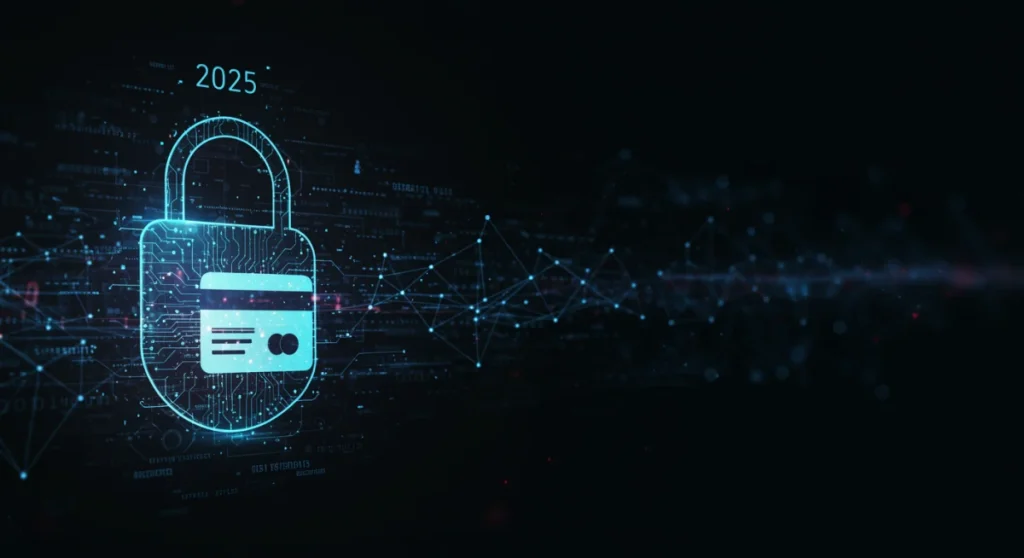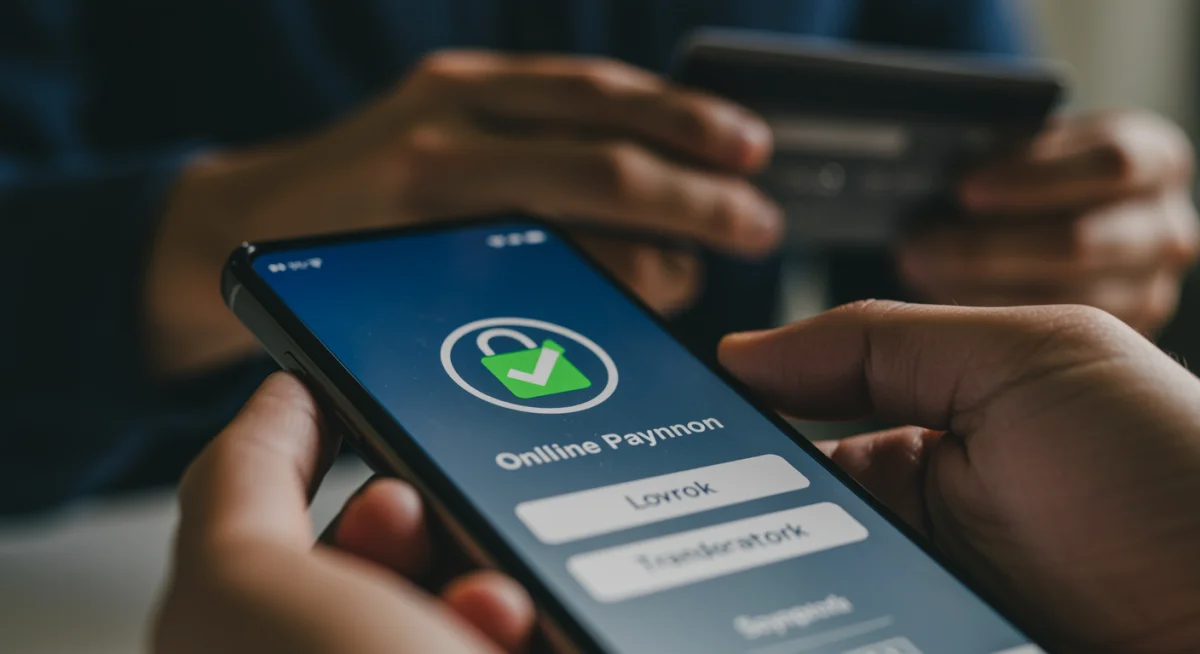Credit Card Fraud Trends 2025: Digital Skimming & Protection

Anúncios
Understanding the evolving landscape of credit card fraud, including the rise of digital skimming and sophisticated unauthorized charges, is paramount for consumers to effectively protect their financial accounts in 2025.
Anúncios
As we navigate 2025, the threat of credit card fraud trends continues to intensify, making it more critical than ever for consumers to understand and protect themselves from digital skimming and unauthorized charges. The digital landscape offers convenience but also presents new vulnerabilities that fraudsters are quick to exploit.
Anúncios
The evolving landscape of credit card fraud in 2025
The year 2025 marks a significant shift in the tactics employed by credit card fraudsters. Gone are the days when physical card theft was the primary concern; instead, digital vectors have become the preferred attack surface. This evolution demands a proactive and informed approach from consumers and financial institutions alike to maintain security.
Fraudsters are increasingly leveraging advanced technologies, including AI and machine learning, to refine their methods, making detection more challenging. The sheer volume of online transactions provides a fertile ground for these sophisticated attacks, necessitating a constant vigilance and adaptation of security practices.
Rise of sophisticated digital skimming
Digital skimming, often referred to as Magecart attacks, has become a pervasive threat. Unlike traditional skimming that involves physical devices on card readers, digital skimming involves injecting malicious code onto legitimate e-commerce websites. This code intercepts payment card details as customers enter them during checkout, sending the sensitive information directly to the fraudsters.
- E-commerce vulnerabilities: Many online stores, especially smaller ones, may lack the robust security infrastructure to detect and prevent these injections.
- Supply chain attacks: Fraudsters often target third-party scripts or services used by multiple websites, amplifying their reach and impact.
- Stealthy execution: The malicious code is often obfuscated and designed to blend in with legitimate website functions, making it difficult for both users and site administrators to spot.
The insidious nature of digital skimming lies in its ability to compromise data without the cardholder ever suspecting a breach at the point of sale. Consumers often only discover the compromise when unauthorized charges appear on their statements, long after the initial data theft.
Understanding unauthorized charges and their origins
Unauthorized charges are the ultimate consequence of successful credit card fraud, manifesting in various forms. While some are clearly fraudulent, others can be subtle, mimicking legitimate transactions to avoid immediate detection. It’s crucial for cardholders to scrutinize their statements regularly.
These charges can stem from a multitude of sources beyond digital skimming, including phishing scams, data breaches at major retailers, and even malware on personal devices. The interconnectedness of our digital lives means that a compromise in one area can quickly lead to financial vulnerability in another.
Phishing and social engineering tactics
Phishing remains a highly effective method for fraudsters to obtain credit card information. Emails, texts, or even phone calls designed to trick individuals into revealing their details are becoming increasingly sophisticated. These scams often impersonate legitimate entities like banks, government agencies, or well-known companies, urging immediate action due to a supposed issue.
Social engineering plays a critical role, exploiting human psychology to bypass technical security measures. Fraudsters craft compelling narratives that create a sense of urgency or fear, prompting victims to click malicious links or provide sensitive data without proper verification.
Advanced malware and ransomware threats
Malware, particularly keyloggers and banking Trojans, continues to pose a significant threat to credit card security. These malicious programs, once installed on a device, can capture keystrokes, intercept banking credentials, and even manipulate online transactions in real-time. Ransomware, while not directly stealing card details, can disrupt access to financial systems, creating opportunities for other forms of fraud.
The sophistication of these threats means that traditional antivirus software alone may not be sufficient. Zero-day exploits, which target previously unknown software vulnerabilities, are a constant concern, requiring users to maintain up-to-date operating systems and applications.
Protecting your devices from cyber threats
Regular software updates are paramount, as they often include patches for newly discovered security vulnerabilities. Using strong, unique passwords for all online accounts, especially financial ones, and enabling two-factor authentication (2FA) whenever possible, adds a crucial layer of defense against unauthorized access. A robust cybersecurity strategy extends beyond just antivirus software to encompass a holistic approach to digital hygiene.
Proactive measures for credit card protection
Protecting your credit card in 2025 requires a multi-faceted approach, combining technological safeguards with diligent personal practices. Being proactive rather than reactive is key to minimizing your risk of becoming a victim of fraud.
Regularly monitoring your credit reports and bank statements is one of the most effective ways to detect fraudulent activity early. Many financial institutions offer alerts for suspicious transactions, which can be invaluable in identifying and stopping fraud before it escalates.
Utilizing security features offered by financial institutions
- Transaction alerts: Sign up for real-time notifications via email or text for every transaction, or for transactions exceeding a certain amount.
- Virtual card numbers: Some banks offer virtual card numbers for online shopping, which can be single-use or merchant-specific, limiting exposure of your actual card details.
- Card lock/unlock features: Many mobile banking apps allow you to instantly lock or unlock your card, providing immediate control if you suspect unauthorized use or misplace your card.
These features, often underutilized, provide powerful tools for consumers to take an active role in securing their financial accounts. Familiarizing yourself with and activating these options can significantly enhance your protection against evolving fraud tactics.

The role of AI and machine learning in fraud detection
Financial institutions are increasingly deploying artificial intelligence and machine learning to combat credit card fraud. These technologies can analyze vast amounts of transaction data in real-time, identifying patterns and anomalies that human analysts might miss. AI models can learn from past fraud cases, constantly improving their ability to detect new and emerging threats.
This advanced analytical capability allows banks to flag suspicious transactions almost instantaneously, often before a fraudulent charge is fully processed. While not foolproof, AI significantly enhances the speed and accuracy of fraud detection, offering a critical defense layer.
Behavioral biometrics and adaptive authentication
Beyond transaction monitoring, AI is also driving advancements in behavioral biometrics and adaptive authentication. Behavioral biometrics analyzes unique user patterns, such as typing speed, mouse movements, or how a user holds their phone, to verify identity. If these patterns deviate significantly from the norm, additional authentication steps may be triggered.
Adaptive authentication dynamically adjusts security requirements based on the risk level of a transaction or login attempt. For instance, a login from an unfamiliar device or location might prompt a more rigorous verification process, adding an intelligent layer of security without inconveniencing legitimate users unnecessarily.
Best practices for secure online shopping
Online shopping, while convenient, remains a prime target for fraudsters. Adopting secure habits can significantly reduce your risk of falling victim to digital skimming and other forms of e-commerce fraud. Always ensure you are shopping on reputable websites and look for indicators of security.
Before entering any payment information, always check for ‘https://’ in the website address and a padlock icon in your browser’s address bar. These indicators signify that the connection is encrypted, protecting your data during transmission.
Key tips for a safer online experience
- Strong, unique passwords: Use complex passwords for each online account and consider a password manager.
- Public Wi-Fi caution: Avoid making purchases or accessing sensitive financial information while connected to unsecured public Wi-Fi networks.
- Regular statement review: Scrutinize your credit card statements monthly for any unfamiliar charges.
- Software updates: Keep your operating system, web browser, and security software up to date.
By integrating these practices into your daily online routine, you create a more robust defense against the evolving landscape of credit card fraud. Protecting your financial information online is a shared responsibility, requiring both vigilant consumers and secure platforms.
What to do if you suspect fraud
Despite all preventive measures, credit card fraud can still occur. Knowing the immediate steps to take if you suspect your account has been compromised is crucial to limit potential damage and recover your funds. Time is of the essence in these situations to mitigate losses.
The first and most critical step is to contact your financial institution immediately. Most banks have dedicated fraud departments available 24/7. They can block your card, prevent further unauthorized transactions, and guide you through the process of disputing charges.
Reporting and recovery process
After contacting your bank, it’s advisable to file a police report, especially if the fraud involves significant losses or identity theft. This report can be helpful for insurance claims or further legal action. Keep detailed records of all communications with your bank and any reports filed.
- Dispute charges: Follow your bank’s procedures for disputing unauthorized transactions. Federal law provides protections, limiting your liability for fraudulent charges.
- Change passwords: Update passwords for all online accounts, especially those linked to your compromised card or email.
- Monitor credit reports: Keep a close eye on your credit reports from all three major bureaus (Equifax, Experian, TransUnion) for any signs of identity theft. Consider placing a fraud alert or credit freeze.
Acting swiftly and methodically can significantly improve your chances of recovering lost funds and preventing further financial harm. Being prepared for such an event is an integral part of comprehensive credit card protection.
| Key Protection Strategy | Brief Description |
|---|---|
| Digital Skimming Awareness | Recognize malicious code injection on e-commerce sites and verify website security. |
| Regular Account Monitoring | Continuously check statements for unauthorized charges and set up transaction alerts. |
| Strong Digital Hygiene | Use strong, unique passwords, 2FA, and keep all software updated to prevent malware. |
| Immediate Fraud Reporting | Contact your bank immediately upon suspecting fraud to block cards and dispute charges. |
Frequently asked questions about credit card fraud
Digital skimming involves hackers injecting malicious code onto e-commerce websites. This code intercepts credit card details as customers enter them during checkout, sending the information directly to the fraudsters without the user’s knowledge. It’s a stealthy method to steal payment data.
Regularly monitor your credit card statements, enable transaction alerts from your bank, use strong, unique passwords for online accounts, and be cautious of phishing attempts. Consider using virtual card numbers for online purchases to limit exposure of your actual card details.
Yes, virtual credit card numbers enhance security significantly. They are temporary, single-use, or merchant-specific numbers linked to your actual account but don’t expose your primary card details. If compromised, the virtual number can be deactivated without affecting your main card.
Immediately contact your credit card issuer to report the fraudulent charge. They will typically block your card, investigate the transaction, and guide you through the dispute process. Federal law limits your liability for unauthorized charges, especially if reported promptly.
AI and machine learning analyze vast amounts of transaction data in real-time to identify unusual patterns and anomalies indicative of fraud. These technologies can detect suspicious activity much faster and more accurately than traditional methods, constantly adapting to new fraud schemes.
Conclusion
In 2025, the landscape of credit card fraud is more dynamic and challenging than ever, dominated by sophisticated digital threats like skimming and advanced unauthorized charges. Protecting your financial well-being demands a combination of proactive security measures, continuous vigilance, and a clear understanding of what steps to take if fraud occurs. By embracing the security tools offered by financial institutions, practicing diligent online habits, and staying informed about emerging threats, consumers can significantly bolster their defenses against these evolving criminal tactics, ensuring their financial security in an increasingly digital world.